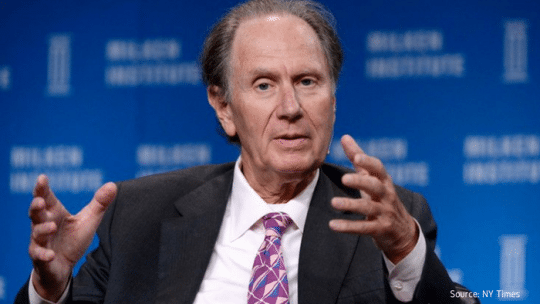
There's little doubt that Uber will, once again, be seeing negative headlines for weeks.
On June 13, Yahoo! Finance leaked an audio recording of an Uber board meeting called to announce CEO Travis Kalanick's leave of absence and to address Uber's problematic workplace culture. But a sexist remark by now-ousted board member David Bonderman (pictured above) may have undermined any positive outcomes of the meeting itself.
At the board meeting, Ariana Huffington—who joined Uber's board April 27—announced the addition of another woman to the board, Wan Ling Martello. Huffington pointed to "data that shows with one woman on a company board, it’s much more likely that there will be a second woman on the board." Bonderman's response that this would lead to "more talking” (and his subsequent resignation from the board following social media outrage) is yet another reminder of Uber's discriminatory work culture.
This is a signal that despite recent efforts to reform, Uber's discriminatory culture is still deeply ingrained at the highest levels, according to Jessica Fish, senior consultant at Leader Networks. The incident is a reminder for communicators to examine their own personal beliefs and workplaces for implicit and unconscious biases about race and gender long before they are exposed in a public setting. (And, as many PR pros and media trainers now warn, with the advent of smartphones, everything said at a company meeting should be considered public.)
Fish, who is also the founder of startup Inclusiv Us, regularly trains organizations on how to implement inclusivity programs. She says addressing implicit bias in the workplace "necessitates a sustained approach."
"A one-time training isn't going to eradicate biases—especially when sexism or other forms of prejudice are rampant within an organization, as we're seeing with companies like Uber," she says. "Getting to the root requires leadership buy-in and training efforts that are funded, required, compelling and actionable. Doing that requires in-depth personal work as well as a sustained investigation around how implicit biases present themselves inside the workplace."
Analyzing implicit bias isn't just a job for HR or internal communications—it needs to be taken seriously at every level of the organization, Fish says. She recommends the following resources for internal communicators committed to enacting inclusivity programs with staying power:
- Google's re:Work articles on "unbiasing"
- A 2016 study on unconscious bias by University of North Carolina Executive Development program director Horace McCormick
- Taking and disseminating one of Harvard's implicit bias tests
Follow Jessica: @fishica
Follow Sophie: @SophieMaerowitz
